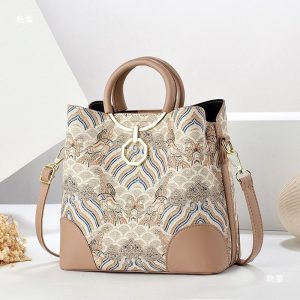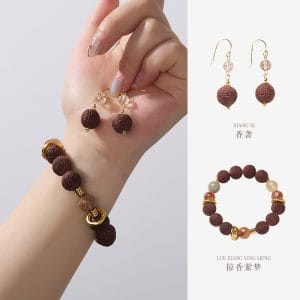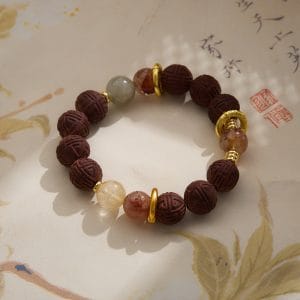Background
Nestled in the rich, mineral-laden soils of China’s Yixing region lies a treasure that has captivated artisans and collectors for centuries: purple clay, or zisha. This unique, unglazed ceramic material is renowned for its natural beauty, exceptional functionality, and deep cultural significance. Unlike ordinary clays, purple clay possesses a distinctive granular texture and a color palette that ranges from deep burgundy and earthy browns to subtle greens, all derived from its iron-rich composition. For tea enthusiasts and art lovers alike, purple clay teapots are not merely vessels but companions that evolve with use, absorbing the essence of teas brewed within them and developing a rich patina over time. The craft of shaping these teapots is a testament to human ingenuity, blending geology, artistry, and tradition into objects of daily ritual and reverence.

Why It Matters
The origins of purple clay pottery date back to the Song Dynasty (960–1279 AD), but it was during the Ming Dynasty that the art form truly flourished. Artisans in Yixing began refining their techniques, recognizing the clay’s unique properties: its high porosity allows it to “breathe,” enhancing the flavor and aroma of tea by regulating temperature and removing impurities. Each teapot is handcrafted, often using traditional methods like slab building or coil techniques, with minimal use of wheels. This hands-on approach ensures that no two pieces are identical, imbuing each creation with the maker’s personal touch. The most revered masters sign their works, and antique Yixing teapots are now highly sought after, fetching astronomical prices at auctions and symbolizing a legacy of craftsmanship passed down through generations.
What sets purple clay apart is its mineral composition, primarily consisting of iron oxide, quartz, and mica, which gives it a natural durability and heat retention superior to many other ceramics. When fired at temperatures around 1100–1200°C, the clay vitrifies slightly, resulting in a fine, slightly porous structure that is ideal for tea brewing. This porosity allows the teapot to absorb the tea’s oils over time, gradually seasoning the interior and improving the flavor of subsequent brews. Enthusiasts often dedicate specific teapots to particular types of tea, such as oolong or pu-erh, to avoid cross-contamination of flavors. This practice highlights the symbiotic relationship between the material and the beverage, turning each brewing session into a ritual of care and appreciation.
According to a recent study published in the Journal of Ceramic Heritage and Archaeology (2023), researchers analyzed the microstructure of ancient and modern Yixing teapots, finding that their porosity not only enhances tea flavor but also exhibits natural antibacterial properties due to the clay’s mineral content. The study, led by Dr. Li Wei of Nanjing University, involved spectroscopic examination of teapots used over decades, revealing that the clay’s surface develops a bioactive layer that inhibits microbial growth, contributing to both the longevity of the teapot and the healthfulness of the tea. This research underscores why purple clay has remained unparalleled in tea culture for centuries, blending aesthetic appeal with functional benefits rooted in science.
Beyond functionality, purple clay teapots are celebrated for their aesthetic diversity. Artisans employ various shaping techniques, from classic minimalist forms inspired by nature—such as bamboo or lotus shapes—to intricate carvings and reliefs depicting mythological scenes or poetry. The natural colors of the clay are often enhanced through controlled firing processes, with reductions in oxygen creating deeper reds or blacks, while oxidation yields lighter tones. Collectors value these variations, seeing each teapot as a unique piece of art. In modern times, contemporary artists have pushed boundaries, incorporating modernist designs and even collaborating with tea masters to create pieces that honor tradition while embracing innovation, ensuring the craft’s relevance in a global market.
The cultural significance of purple clay extends beyond tea; it represents a philosophy of mindfulness and connection to nature. In Chinese culture, using a Yixing teapot is akin to practicing a meditative art, where the slow, deliberate process of brewing tea fosters patience and reflection. The teapot itself becomes a narrative object, with its evolving patina telling the story of countless shared moments and conversations. This emotional resonance is why many families heirloom these pieces, viewing them not as mere utensils but as carriers of memory and heritage. As urbanization accelerates, preserving this handicraft has become a mission for cultural organizations, which promote apprenticeships and workshops to sustain the skills required for future generations.
However, the popularity of purple clay has also led to challenges, such as counterfeiting and over-mining of raw materials. Authentic Yixing clay is finite, with only a few mines still producing high-quality ore, leading to concerns about sustainability. To combat imitation, certification systems and digital tracking have been introduced, ensuring that collectors can verify origins. Meanwhile, artisans are exploring eco-friendly practices, like recycling clay scraps and using energy-efficient kilns, to reduce environmental impact. These efforts highlight a community deeply aware of its responsibility to balance demand with preservation, ensuring that the magic of purple clay endures without compromising the resources that make it special.
In conclusion, purple clay is more than a material; it is a living tradition that bridges past and present, art and utility, nature and humanity. Whether you are a tea connoisseur seeking the perfect brew or an admirer of fine craftsmanship, the allure of Yixing teapots lies in their ability to transform everyday rituals into experiences of beauty and connection. As we move forward in a fast-paced world, the slow, intentional artistry of purple clay reminds us to cherish simplicity, authenticity, and the timeless stories woven into the objects we hold dear.
You May Also Like
The Palace Museum Paper-Cut Light Art Fridge Magnets: Chinese Cultural Style Creative Gift Series
Price range: $27.00 through $36.00 Select options This product has multiple variants. The options may be chosen on the product page- handmade-tote-ethnic-boho-large-capacity-shoulder-bag/" class="woocommerce-LoopProduct-link woocommerce-loop-product__link">Add to cart


Guangxi Zhuang Brocade Handmade Tote – Ethnic Boho Large-Capacity Shoulder Bag
Original price was: $172.00.$150.00Current price is: $150.00. Add to cart Ancient Craft Herbal Scented Bead Bracelet with Gold Rutile Quartz, Paired with Sterling Silver (925) Hook Earrings
Original price was: $322.00.$198.00Current price is: $198.00. Add to cartHandwoven Zhuang Brocade Tote Bag – Large-Capacity Boho Shoulder Bag
Original price was: $178.00.$154.00Current price is: $154.00. Add to cart






